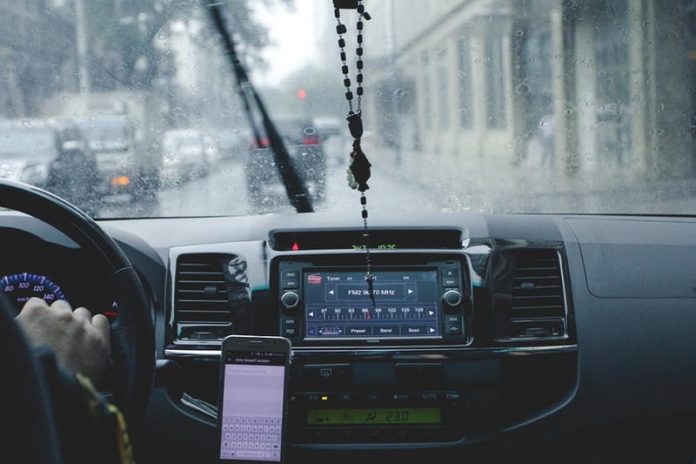The average American drives 13,500 miles per year. This means that at some point every year, it’s pretty much guaranteed that you’re going to have to drive in the rain.
Driving in the rain can be a scary experience, especially if you’re a new driver. Yet if you learn some key tips for driving in the rain, you can eliminate some of the anxiety and make it as safe and stress-free as possible.
In this guide, we’ll look at some key tips for safe driving in the pouring rain. Are you ready to learn more? Then read on!
1. Be Conscious of Your Speed
Driving in the rain comes with its own unique set of hazards. Your tires are made to deal with a rain-slicked surface but that doesn’t mean your control isn’t compromised.
Even a little rain can make your grip on the road a little less sure, so you need to be very conscious of your speed when you’re driving in the rain. This is particularly the case during heavy rain, where the risk of aquaplaning (losing grip on the road completely) is higher.
Cut your speed by a few miles per hour and really focus on your driving, rather than getting to your destination as fast as possible.
2. Build a Bigger Braking Distance
Under ideal circumstances, you want to be around two seconds behind the vehicle in front of you. During heavy rain, you should build a bigger distance between you and the vehicle ahead of you, around four to five seconds.
This is because no matter how good your brakes are, you’re at a higher risk of skidding if the road is slick with rain. This means it will take longer for you to come to a complete stop. Make sure that you’ve got enough space ahead of you to come to a stop safely.
3. Pay Close Attention to Your Surroundings
When you’re driving in the rain, it’s very important that you keep an extra close eye on your surroundings. If you’re driving in a city, the danger of pedestrians stepping out into the road is particularly serious during rain due to the increased braking distance. Lowered visibility may also mean that the pedestrian can’t see your car as well.
Switch your lights on to increase visibility and pay close attention to the road and what’s going on around it. Your hazard perception skills will be put to the test during a rainstorm, so make sure you stay sharp.
4. Make Sure You Have the Right Supplies in Your Car
As the risk of an accident is higher during heavy rain, you should make sure that you have the right essentials in your car. A first aid kit is one of these. Make sure you’ve got bandages, plasters, painkillers, and the like available to you so you could treat yourself or others in case of an accident. (https://manhwatop.com/)
If you are in a car accident and you’re injured, you may be entitled to compensation if it wasn’t your fault. Experts like this car accident lawyer can tell you whether you have a case or not.
5. Always Use Your Wipers
Some people forget to turn on their windshield wipers during light rain. This is not a good idea. If there’s any precipitation at all, turning on your windshield wipers is absolutely vital.
Even light rain can obscure your vision a lot, which is terrible for driving. Make sure that if rain is falling, you turn your wipers on, even if you only put them on at their slowest speed. (xanax)
6. Open Your Windows a Crack
It may seem counterintuitive, but if you’re caught in a rainstorm, you’ll want to open your windows a crack. This is because rain makes the atmosphere outside much more humid. This means that your breath and that of your passengers can make your car’s windows foggy.
While most cars have systems to deal with this, sometimes they’re not up to the task. If you notice that the windows are starting to fog up, opening your windows a crack to let some fresh air in can help clear the glass. If you find that your visibility is fading fast, pull over at once.
7. Turn Off Cruise Control
We often rely on cruise control to keep us going at the right speed but in rainy conditions, anything that separates you from the workings of your car should be jettisoned. We’d recommend that you turn it off and focus on making sure you’re working the accelerator, brakes, and clutch (if applicable) in concert with each other.
You want a very fine level of control over your car when driving in the rain. Don’t rely on cruise control.
8. If You Skid Stay in Control
If you’re skidding on water, it can be easy to lose your cool. It’s very important that you stay in control of your car when you go into a skid and work against it as much as possible.
If you go into a skid, follow these instructions:
- If your front-end skids, lift off the gas and maintain your steering angle
- If the back-end skids, ease off the gas and turn into the corner you’re taking
- If your back-end skids after you’ve braked, apply a little extra gas to stabilize
Knowing these tips helps you stay in control of your vehicle.
Put These Tips for Driving in the Rain Into Practice
We hope that you’ve enjoyed these tips for driving in the rain and that you’ll put them to use next time you find yourself driving in bad conditions. Keep your cool and you’ll be surprised just how well you control your vehicle.
For more interesting and informative articles like this, check out the rest of our blog!










